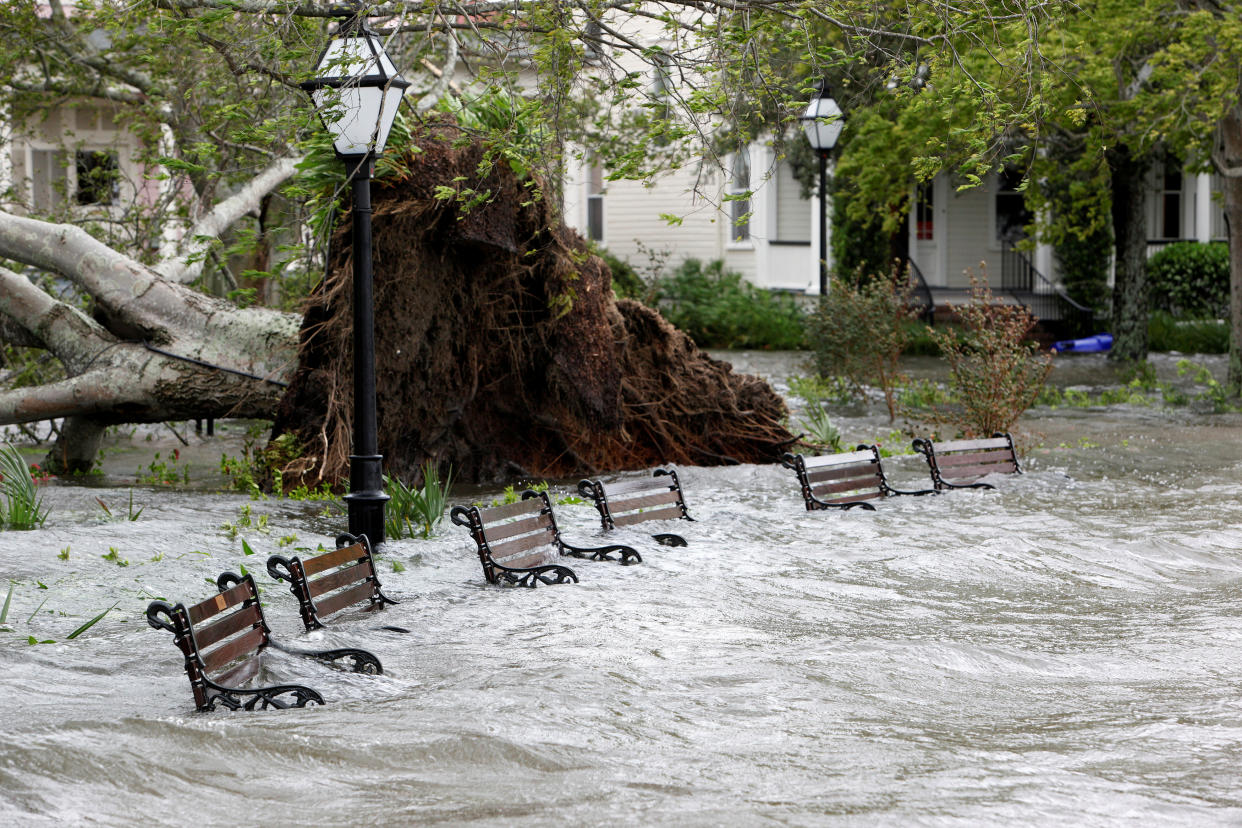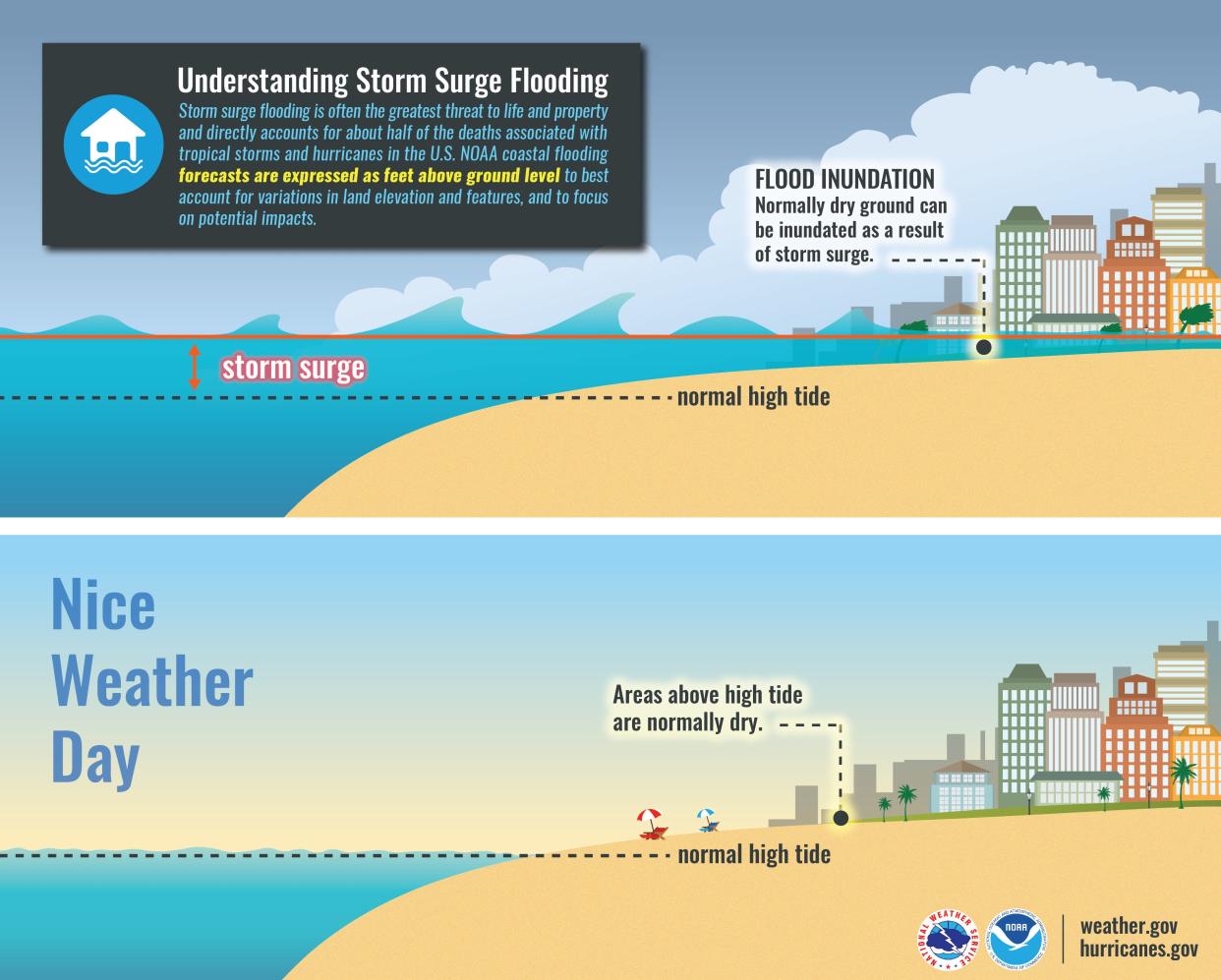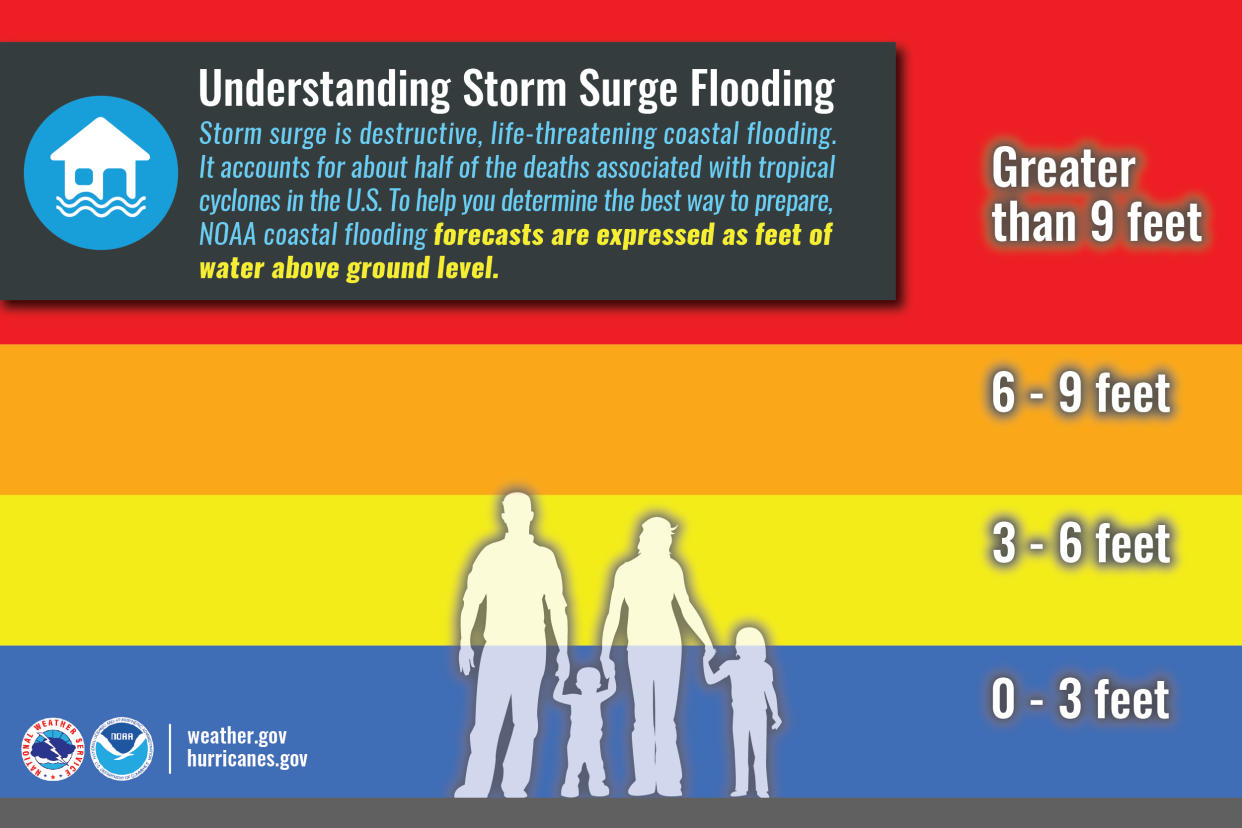Hurricane Lee: How to stay safe from storm surge

Tropical storm conditions are expected to begin across parts of coastal New England Friday afternoon, with heavy rain and strong winds, as Hurricane Lee barrels north in the Atlantic, with the center of the storm still hundreds of miles off the U.S. East Coast.
Those hazardous conditions could create localized flooding and power outages across affected areas.
Coastal areas from New York’s Long Island through Boston Harbor, Cape Cod, Martha’s Vineyard and Nantucket in Massachusetts to the U.S.-Canadian border could see between 1-3 feet in storm surge this weekend if it peaks at the same time as high tide, according to the National Hurricane Center (NHC).
Read more on Yahoo News: Tropical storm warnings issued for Mass. as Hurricane Lee heads for New England, from Boston 25 News
What is a storm surge?

“Storm surge is the abnormal rise in seawater level during a storm,” according to the National Oceanic and Atmospheric Administration (NOAA). “The surge is caused primarily by a storm’s winds pushing water onshore.”
Why storm surge is dangerous

Storm surge can occur before, during, or after the center of a storm passes an area. It can cause water levels to rise quickly and flood large areas, sometimes within a matter of minutes.
Storm surge poses a significant threat for drowning and is often the greatest threat to life and property from a hurricane, according to the NHC.
Just six inches of water can knock an adult off their feet, while it only takes two feet of rushing water to carry away most vehicles, including SUVs and pickup trucks.
Storm surge has the potential to cut off evacuation routes, which is why it’s important to heed evacuation orders when they’re issued by local authorities.
What to do when there’s a storm surge watch or warning
The U.S. Coast Guard advises people to stay informed with the latest weather forecasts and advisories, monitoring the National Hurricane Center and local news for information on a storm’s path and intensity as forecasts can change. Make sure your cell phone is fully charged and enable emergency alerts.
If you live in a coastal area or an area prone to flooding, be prepared to evacuate quickly and listen to all evacuation notices from local authorities. Check your state’s website to see if your address is within an evacuation zone, as well as the Federal Emergency Management Agency’s website here to see if you live in a flood zone.
Prep an emergency kit with emergency supplies like: non-perishable food, water, first-aid kit, medications, flashlights, batteries, phone chargers, essential documents and pet supplies if applicable.
In coastal communities, boat owners should secure their vessel or move it to a safer location.
How to stay safe during a storm surge
Run from the water and hide from the wind, advises the NOAA. “When you’re at risk from flooding, it’s important to get to high ground away from bodies of water and any flood-prone areas.”
Evacuate if you’re told to do so from local authorities. You also don’t need to wait for evacuation orders to leave if you don’t feel your surroundings are safe. The U.S. Coast Guard advises people in distress to call 911.
It’s best to stay indoors during the storm, away from windows in an interior room on the lowest floor of your home, if possible. Stay away from the shoreline as dangerous waves, rip currents and high winds can create hazardous conditions.
Check on your neighbors, especially the elderly and those with disabilities to offer help to those who may need it.
Where to find storm surge information
During a storm event, find out the current storm surge risk and public advisories from the National Hurricane Center here or from the National Weather Service here.
Find out your overall potential risk for storm surge here.
